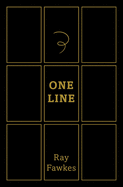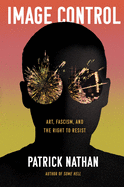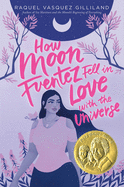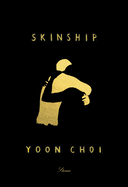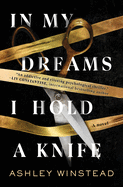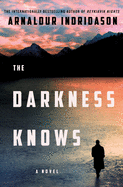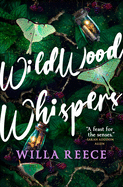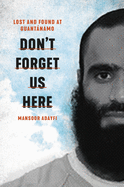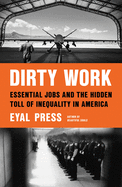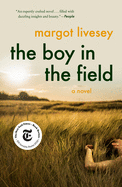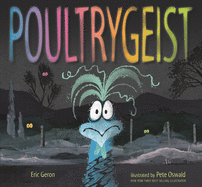Tuesday, August 17, 2021
I recently become mildly obsessed with the podcast The Adventure Zone, where four podcasters play games loosely based on Dungeons & Dragons. The podcast, sadly, isn't for children, though kids--whose caretakers don't mind swearing--can certainly enjoy it. It made me think: What children's and YA book worlds would I want in a podcast like this for children and teens?
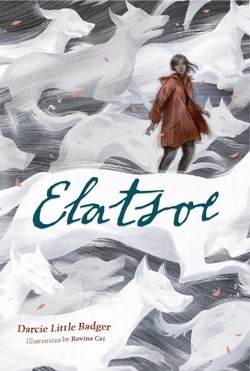 I would love to see someone use the world of Darcie Little Badger's Elatsoe (Levine Querido, $18.99) as background for play. The book is a supernatural murder mystery that takes place in a U.S. that has Fairy Ring Transportation Centers, endless fields of scarecrows with human eyes and Lipan Apache ghost whisperers. It's Indigenous Sookie Stackhouse for the teen set, and I can't think of anything more enjoyable.
I would love to see someone use the world of Darcie Little Badger's Elatsoe (Levine Querido, $18.99) as background for play. The book is a supernatural murder mystery that takes place in a U.S. that has Fairy Ring Transportation Centers, endless fields of scarecrows with human eyes and Lipan Apache ghost whisperers. It's Indigenous Sookie Stackhouse for the teen set, and I can't think of anything more enjoyable.
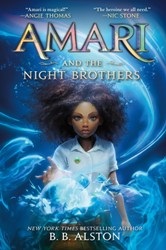 B.B. Alston's Amari and the Night Brothers (Balzer + Bray, $8.99) is another world that game players would undoubtedly love to inhabit, featuring supernatural creatures hidden in plain sight. Amari gets pulled into working with the Bureau of Supernatural Affairs, "the link between the known world and the hidden," where humans work alongside magical beings in bureaucratic units like the Department of Supernatural Health.
B.B. Alston's Amari and the Night Brothers (Balzer + Bray, $8.99) is another world that game players would undoubtedly love to inhabit, featuring supernatural creatures hidden in plain sight. Amari gets pulled into working with the Bureau of Supernatural Affairs, "the link between the known world and the hidden," where humans work alongside magical beings in bureaucratic units like the Department of Supernatural Health.
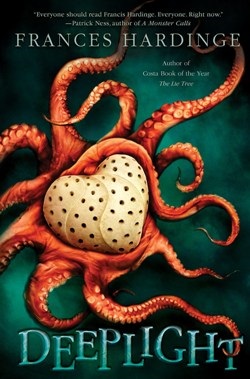 Frances Hardinge is a seemingly inexhaustible source of bizarre, creepy and utterly original worlds. In Deeplight (Abrams, $19.99), she gives a nod to Lovecraftian horror in her own brilliant way, with oceanic terrors that are massive and unknowable. A Face Like Glass (Abrams, $10.99) takes place in Caverna, a mad, marvelous underground world filled with artisan-crafted luxuries; however, these tunnel dwellers are unable to adjust their facial features into expressions.
Frances Hardinge is a seemingly inexhaustible source of bizarre, creepy and utterly original worlds. In Deeplight (Abrams, $19.99), she gives a nod to Lovecraftian horror in her own brilliant way, with oceanic terrors that are massive and unknowable. A Face Like Glass (Abrams, $10.99) takes place in Caverna, a mad, marvelous underground world filled with artisan-crafted luxuries; however, these tunnel dwellers are unable to adjust their facial features into expressions.
Someone please get the McElroy family on the horn and pitch my fantastic ideas. --Siân Gaetano, children's and YA editor, Shelf Awareness
Skinship: Stories
by Yoon Choi
In her debut collection, Skinship: Stories, Yoon Choi tells eight tales of Korean Americans, skillfully highlighting both the particulars of their experience and also the extent to which they share challenges in common with other immigrants to the United States. One of the most emotionally charged stories is "The Church of Abundant Life." Soo, a middle-aged woman who has settled in Lancaster, Pa., persuades her husband to drive her to a Philadelphia revival where an old friend of her husband's from Korea is preaching. When her husband fails to engage with the minister, she "wonders if it is his friend's success or his friend's life sorrows that have made him hold back," and realizes that "perhaps there are things about her husband that she will never understand."
Choi explores a shared immigrant experience in "A Map of the Simplified World," where Anjali Anand, an Indian girl, enters the third grade class of Ji-won Li, who came to the U.S. only a year earlier. The girls quickly bond, even as Ji-won's mother expresses her prejudice against Indian people. Years later, Ji-won's college application essay sparks a memory of her old friend that prefigures, for both good and ill, what she understands as "the onset of a new worldview."
Most collections have one or two entries that don't quite measure up to the quality of the volume as a whole, but that's not the case here. Each of Choi's stories is distinguished by careful character development, patient exposition and an emotional effect that deepens as the story proceeds. --Harvey Freedenberg, freelance reviewer
Discover: Yoon Choi illuminates the lives of Korean Americans in eight sensitive, meticulously crafted stories.
Mystery & Thriller
In My Dreams I Hold a Knife
by Ashley Winstead
Ashley Winstead makes her fiction debut with the edge-of-your-seat academic thriller In My Dreams I Hold a Knife. It's been 10 years since Jessica Miller graduated from a prestigious North Carolina university. She did well in college both academically and socially, earning good grades and becoming part of an exclusive clique called the East House Seven. The East House Seven's social status was destroyed during their final semester, however, when one member, Heather, was brutally murdered in her dorm room and another member, Jack, was suspected as the killer.
Jessica and Jack, who both live in New York City now, have stayed in touch, but Jessica, who narrates the novel, doesn't dare tell the other members of their group that she thinks Jack is innocent. Meanwhile, Jack can't risk showing up at their 10-year reunion, but the rest of them do. Together for the first time in a decade, tensions are extremely high among the five friends. As the reunion weekend progresses, members of the East House Seven begin to reveal shocking secrets that will tear them apart.
Taut and atmospheric, with scenes from Jessica's childhood and college years interposed with the dramatic events of the present day, In My Dreams I Hold a Knife will keep readers guessing until the very last moment. Perfect for fans of dark academia, the well-drawn characters will remind many of their own college days. In My Dreams I Hold a Knife is a twisty, literary thriller not to be missed. --Jessica Howard, bookseller at Bookmans, Flagstaff, Ariz.
Discover: This darkly atmospheric thriller pits five friends, who are possibly guilty of a classmate's murder, against each other at their 10-year college reunion.
The Darkness Knows
by Arnaldur Indridason, transl. by Victoria Cribb
One characteristic of Scandinavian noir is the way that inhospitable weather plays a role in the story, and this has never been truer than in Arnaldur Indridason's The Darkness Knows. In the Icelandic crime-writing standard-bearer's invigoratingly atmospheric thriller, the frozen body of a man who's been missing since 1985 is found on the Langjökull glacier.
As in The Shadow District, detective Konrád is lured out of retirement to consult on a case, but in The Darkness Knows he has a personal stake. The man preserved in the block of ice, his death caused by a blow to the head, is Sigurvin, whom Konrád failed to find when the businessman disappeared three decades earlier. Now Konrád has a second chance: "Although he had long ago stopped searching, he'd never managed to put the case entirely behind him," he admits to himself. Another enticement to get involved: Hjaltalín, who was the prime suspect in Sigurvin's disappearance all those years ago, and who is taken into custody upon the body's discovery on the glacier, has made a request to speak with Konrád personally.
The theme of atonement in The Darkness Knows isn't restricted to the professional realm: as Konrád follows what seem like long-shot leads, he delves deeply into his own personal shortcomings and demons. Indridason (Black Skies; Strange Shores) also manages to imbue his keen and nimble thriller with a cautionary note about global warming's effects--on Iceland in general and on the glacier that hosted the murdered man in particular. --Nell Beram, author and freelance writer
Discover: Retired Icelandic detective Konrád is back in a multifaceted thriller in which the body of a man missing for three decades is found on a glacier.
Science Fiction & Fantasy
Wildwood Whispers
by Willa Reece
Wildwood Whispers, the first book by author Barbara J. Hancock written under the pseudonym Willa Reece, transports readers to the Appalachian wilderness in a fast-paced and compelling novel filled with magic and female bonds.
Mel Smith and Sarah Ross were chosen sisters, having pinky sworn their sisterhood in one of the many foster homes they shared over the course of their childhood. They shared everything together--until Sarah is killed as a young adult in a freak car accident, and Mel is left untethered and unmoored, with nothing to do but fulfill her final promise to Sarah: return Sarah's ashes to her hometown in the western Virginia mountains, to be buried in the very same mountain garden where Sarah once found her mother's murdered body.
This task sets Wildwood Whispers in motion, as Mel returns to Sarah's hometown of Morgan's Gap and finds herself increasingly drawn into the small town's strange landscape. Taken in by Granny, the town's resident wisewoman, Mel learns the ways of the herbs that Sarah and her herbalist mother knew. But the wildwood, as the locals call the hundreds of miles of Appalachian wilderness that surround the town, is known for drawing people in, not for letting them go. What starts as a simple task to honor a dead sister's last wish becomes a much larger, more daunting undertaking. The wildwood is a looming, omnipresent entity on every page of the darkly atmospheric Wildwood Whispers. Infused with Appalachian lore, traditions of herbal medicine and the power of nature, Reece's novel is a story of womanhood and sisterhood, and the strength inherent in both. --Kerry McHugh, blogger at Entomology of a Bookworm
Discover: This atmospheric novel set in the western Virginia mountains is infused with Appalachian lore and traditions of herbal medicine.
Graphic Books
One Line
by Ray Fawkes
Ray Fawkes's One Soul debuted in 2011, earning extensive adulation (including an Eisner nomination) for its never-before-done graphic presentation of 18 lives via 18-panel grids divided across two-page spreads. His 2014 follow-up, The People Inside, used a similar format to follow 24 individuals through various relationships. One Line resurrects and enhances Fawkes's compelling set-up to depict 18 global families over four centuries. To read the trilogy chronologically isn't necessary, but rewardingly illuminating.
Fawkes opens with a stark, single-panel-per-page, warning prologue: before words and dialogue, humanity has already settled into a violent cycle of territorial purges, murderous confrontations, promised revenge. That narrative will repeat far too often through so-called "civilized" generations. As Fawkes introduces his 18 families, geographies come first--some with recognizable names and landmarks, including Venezia, France, Ireland--with overlaps hinted at, sharing homelands, bloodlines, bloodlust. War, imperialism, slavery, religious persecution and purges, gender inequity, poverty, haunt throughout, but the destruction is tempered with nods to familial bonds: "I find someone"--to love; "I will teach [him/her] everything I know"; "we can rely on each other." Parents fail, siblings part, children cleave, communities shatter, so many die. May the necessary survive.
Fawkes's simple black-and-white drawings belie a multilayered, interconnected narrative. His 18 panels per spread are consistent and uniform, but their contents often eschew borders, spilling into one another as families confront, overlap and challenge each other. Panels turn completely black as families die out--sometimes at the same time. Audiences will find a single read is not enough; multiple meditative readings should yield gratifying insights each time. --Terry Hong, Smithsonian BookDragon
Discover: This graphic novel compellingly follows 18 families over generations, caught in cycles of destruction yet alleviated by precious moments of bonding.
Biography & Memoir
The History of Bones
by John Lurie
In his memoir, The History of Bones, the musician, actor and painter John Lurie demonstrates that he can be, among other things, petty, defensive, self-aggrandizing, self-pitying, gratuitously provocative and regularly obscene. Not at all unrelatedly, The History of Bones is a fantastic read.
Like his friend the painter Jean-Michel Basquiat, about whom he has much to say, Lurie helped build the downtown New York art scene of the 1980s. In The History of Bones, he charts how he got there following his semi-delinquent childhood in Worcester, Mass. ("When Ted Kennedy came to speak at our high school shortly after Chappaquiddick, I was locked in the principal's office by myself because they were terrified of what I might do or say"). In the midst of his thrill seeking and drug taking, Lurie got his first saxophone, and his love of and facility with the instrument led to the Lounge Lizards, the storied New York jazz band that he cofounded in 1979 with his brother, Evan.
Although Lurie drops some names, most land on pillows, and he can be endearingly disarming with understatement. He surely traffics in some hyperbole, but The History of Bones contains dozens of what seem like unguarded moments, as when Lurie recounts his spiritual pursuits, his tussles with drug addiction and his ambivalent relationship to fame, especially when he achieves it outside the musical realm. Readers will leave Lurie's book, which carries them through the 1980s, with the impression that they have been keeping company with a kvetchy but wildly entertaining uncle who's bent on proving that things were better in the old days. --Nell Beram, author and freelance writer
Discover: In his compulsively entertaining memoir, the musician, actor and painter John Lurie recalls his life in New York's thriving downtown art scene in the 1980s.
Don't Forget Us Here: Lost and Found at Guantánamo
by Mansoor Adayfi and Antonio Aiello
Written in collaboration with Antonio Aiello, Yemeni artist Mansoor Adayfi's memoir Don't Forget Us Here: Lost and Found at Guantánamo is a remarkable feat of storytelling by an innocent man held without charge for 14 years at the infamous detention center at the Guantánamo Bay Naval Base.
The intimate truths revealed here, on the eve of the detention center's 20th anniversary, require fortitude on the part of readers, yet the shocking reality of how the U.S. government purchased hundreds of men, kidnapped and sold by Afghan warlords, and subjected them to torture and inhumane confinement is only one slice of the narrative. Adayfi divides his story into sections titled Arrival, Resistance, Hunger and Departure, and interplays dark comedy and graceful imagery to illustrate how detainees who represent 50 nationalities and speak more than 20 languages found "small moments of joy and beauty, of friendship and brotherhood" despite being caged like animals.
During his captivity, Adayfi became a resistance leader, hunger strikes being the preferred form of protesting cruel treatment. It was the small things that lifted his spirits: memories of his mother making tea, a detainee's beautiful singing, the soothing balm of prayers and a Black guard's kindness. "The Black officers were always nicer. I don't know why," he writes.
Adayfi hopes to quiet the ghosts that still haunt him and to chip away at the stigma of being a Guantánamo detainee. By shedding light on the broader story of the detention center, Don't Forget Us Here offers an immensely valuable lens for readers willing to confront the moral and ethical--not to mention legal and public relations--disaster that is Guantánamo. --Shahina Piyarali, reviewer
Discover: In this exceptionally moving memoir, a talented Yemeni writer, artist and former Guantánamo detainee remakes his life in Serbia.
Social Science
Image Control: Art, Fascism, and the Right to Resist
by Patrick Nathan
Lambda Award finalist Patrick Nathan (Some Hell) brings vulnerability and clarity to current events through the lens of art criticism in Image Control: Art, Fascism, and the Right to Resist, a book somehow both infuriating and comforting. Whether facing threats of tyranny, a global pandemic, racism, gentrification or homophobia, he implores readers, "To thrive, or even survive, we must find a life beyond the fascist imagination--a life where it's not only possible, but easy to imagine confronting a global disaster... without the temptation to monetize it, entertain oneself with it, surrender to it, or hang one's personality on its hook."
His cri de coeur challenges insidious assumptions that surround the single image. "Photographs don't speak; they are used as speech. Photographs don't mean; they are imbued with meaning." As media, both social and traditional, distill themselves into image-based reportage, truth becomes ever more elusive. As an example, Nathan carefully unpacks the photo emblazoned on Time magazine in 1998 that solidified Matthew Shepard as a gay martyr, but a figure whose story is in truth far more complicated than that single image. "This is why challenging the narrative of an atrocity is so upsetting to those who deeply connect with its tragedy. This is why I began this book with a photograph that means something to me: tragedy can change, and we along with it."
Image Control is both political and personal, searing and humbling, a rare and inspiring instance of cultural criticism in which the author willingly and necessarily interrogates himself as well. --Dave Wheeler, associate editor, Shelf Awareness
Discover: Patrick Nathan gracefully and humbly outlines a necessary antidote for a polarizing age in which image is everything.
Dirty Work: Essential Jobs and the Hidden Toll of Inequality in America
by Eyal Press
Dirty Work: Essential Jobs and the Hidden Toll of Inequality in America presents a series of heartbreaking case studies in support of its provocative thesis, arguing that Americans have delegated their society's most unpleasant, morally troubling tasks to a "separate, largely invisible class of 'dirty workers.' " Journalist Eyal Press (Beautiful Souls) introduces readers to a variety of dirty workers, including prison guards, "joystick warriors" who help execute drone strikes and workers in industrial slaughterhouses. Press argues that these laborers solve "various 'problems' that many Americans want taken care of but don't want to have to think too much about." As a result, dirty workers are simultaneously stigmatized and essential to maintaining "the prevailing social order."
As Press explores many different examples of dirty work, certain commonalities begin to emerge. One is inequality: these workers often feel trapped in their occupations by economic circumstances. Another is a concept Press calls "moral injury," a term used to describe the psychological or even spiritual cost of transgressing one's own sense of morality. The invisible class that Press describes also suffers from invisible wounds, he argues, incurred on behalf of the American status quo. While it may be simple for progressive-minded individuals to look down on, for example, slaughterhouse workers, it does not stop the majority from consuming massive quantities of meat.
Dirty Work is not a comfortable or comforting read, nor is it meant to be. Instead, it is a rigorously argued, compassionately framed moral appeal that for some readers might serve as a wake-up call. --Hank Stephenson, the Sun magazine, manuscript reader
Discover: Dirty Work confronts readers with the morally troubling work taking place in American prisons, slaughterhouses and elsewhere, raising provocative questions with compassion.
Now in Paperback
The Boy in the Field
by Margot Livesey
Named a New York Times Notable Book of the Year and an O Magazine Best Book of the Year, The Boy in the Field is a stunning novel of tenderness, interconnectedness, cause and effect by Margot Livesey (The Flight of Gemma Hardy; Mercury). Matthew, Zoe and Duncan are walking home from school one day when they find him, in a field with cows, swallows, bluebottles: a beautiful young man bloodied and unconscious. He speaks one word: "Cowrie," Zoe reports to the police. "Cowslip," says Duncan. "Coward," says Matthew. With their discovery, they save his life.
The teenaged siblings are close, loving and very different from one another. Matthew, the eldest, is thoughtful. He hopes to become a detective one day, and becomes obsessed with solving the mystery of who hurt the boy in the field, and why. He puzzles over motivations. Zoe has "a gift for finding things: birds' nests, their mother's calculator, a missing book, a secret." She worries over her parents' relationship and explores her first sexual experiences; she is drawn to the ways in which people come together and apart. Duncan, the youngest, is observant, almost preternaturally sensitive and a gifted painter. Finding the boy will start him toward a discovery about his own life that might be destructive.
Livesey's deceptively simple prose renders each sibling as both sweet and complicated. Their shared experience, finding the injured young man, begins for each of them a different kind of acceleration: into adulthood, out of innocence, into reconfigured connections. Despite the violent crime related to its title and the insecurities that arise for various characters along the way, this brilliant novel offers a sense of beauty and safety in its quiet ruminations. --Julia Kastner, librarian and blogger at pagesofjulia
Discover: A single discovery touches three siblings' lives in surprising ways in this poignant, gleaming story.
Children's & Young Adult
How Moon Fuentez Fell in Love with the Universe
by Raquel Vasquez Gilliland
In her second YA novel, Mexican American author and poet Raquel Vasquez Gilliland (Sia Martinez and the Moonlit Beginning of Everything) pours luscious prose over an inspiring coming-of-age tale and tops it off with a steamy enemies-to-lovers romance.
Mexican American and recent high school graduate Moon's twin sister, Star, is Internet-famous for her following on "Fotogram." When Star lands a spot on a cross-country influencer tour, the sisters' mother signs Moon up to sell merchandise. Moon is tired of feeling like her abusive, hyper-religious mother's less-loved child, as well as "religious model" Star's less attractive, size-16 sister. Moon dreams of going away to college but needs funds. Vowing to save her meal allowance by cooking on the tour bus, Moon runs afoul of fellow merch-seller Santiago, a gorgeous one-handed giant who considers the kitchen his domain. Despite a disastrous first meeting and plenty of cutting banter, thick sexual tension pervades their every interaction. Moon, whose primary language is English, collects beautiful Spanish words, follows her aunt's botanical folkways and designs tarot cards, while half-Colombian Santiago has a passion for culinary salt varieties. However, a family curse, conflict between Moon and Star, and Santiago's insecurity about his disability create trouble for the two despite their unstoppable chemistry.
Gilliland's prose is a soft, dreamy wonderland, wrapping scenes in "warm sheets of sunset light," offset by Moon's gleefully snarky narrative voice complaining that she needs "a degree in astrophysics to make a stinking omelet." Older teens may best relate to Moon's quiet fight for independence in this body- and sex-positive tale of finding love and loving oneself. --Jaclyn Fulwood, youth experience manager, Dayton Metro Library
Discover: A budding artist from an abusive family falls for a hot, grouchy chef in this sexy, poetic YA romance.
Poultrygeist
by Eric Geron, illus. by Pete Oswald
Even before the title page, we've got a country road, an ambling rooster and a barreling semi--this can't end well... or can it? What audiences get is hilarious fun, because author Eric Geron and illustrator Pete Oswald are about to crack every crossing-the-road chicken joke (and then some!) in their outstanding Poultrygeist. The intended audience might be children, but their adults will likely have an even better time.
"What happened," the chicken asks--his spirit hovering over a flattened, white-feathered body newly blackened with tire tracks. Levitating eyeballs are more than happy to enlighten: "Well, what's the last thing you remember?" The chicken replies, "I remember crossing the road to get to the other side"--of course! But this is a rather different "OTHER SIDE," and one "Beeeak!" confirms the chicken's sudden realization that he's "fried," "roasted," "cooked," "in the soup"--a POULTRYGEIST. His fellow spirits attempt to make him a "foul" fowl, but the newbie would rather be a "friendly ghoul," showing concern that young readers might become too frightened. ("Pssst! Are you OK?" he considerately asks readers.) He refuses to be bullied into being scary... uhhh, but then why is everyone running the other way? And what of the hapless squirrel?
Geron, an already prolific author under his pseudonym, Rico Green, is serendipitously paired with artist and production designer Oswald (Rita and Ralph's Rotten Day). The dynamic duo absolutely know how to entertain, Geron with the clever, multilayered phrases ("cock-a-doodle-BOO!"; "ghosts of a feather haunt together!"), Oswald with the colorful and expressive, digitally created ghouls and goblins ready to engage and captivate from the OTHER SIDE. The result proves supernaturally spooktacular. --Terry Hong, Smithsonian BookDragon
Discover: A chicken crosses the road but doesn't quite get to the other side--at least not without being flattened by tire tracks--in the cleverly captivating Poultrygeist.


